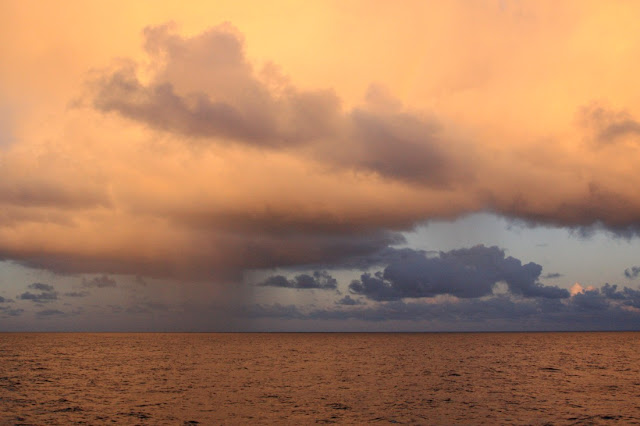We get lots of good wishes for the survey
and I hope the blog will fulfill your expectations, specially knowing that our
families are so much looking forward to hearing the latest news. But besides
telling you about life on board, this blog aims to awake your interest in our
work and specially in marine fauna. Not that marine flora is not interesting or
important, far from that, but there are no macroalgae in the grounds we fish and
microalgae are out of our scope. But these microalgae we do not see and that
make up the phytoplankton keep alive most marine fauna, directly in the case of
the smallest herbivores and indirectly in the case of most of the remaining
species. If you are interested on microalgae I strongly recommend http://www.fitopasion.com/, a very good
blog by our colleague Francisco Rodriguez. So please ask anything crossing your
minds (to Fran or to us, depending on the question!). You can use the comments
in the blog, or e-mail, if you have a friend or relative on board.
I was asked the other day why do we fish
this particular depth range (50-1500m) and not other. It is a very good
question and an example of those details we do not get into because from our
position we do not think it may arise questions.
Our faithful followers know we fish between
that depth range, and that there is a reason for it. The main goal of our
survey is to obtain data on several fish species with commercial interest.
Except for redfish, which is pelagic, all these species have in common being
demersal. This means that they depend on the seabottom, for refuge, feeding, or
both. Besides, different species have preferences for different temperature and
depth ranges. So to fish them we have to follow them where they are.
I was also asked if the Grand Bank got
deeper than 1500m, and the answer is yes. The Grand Bank is the top of a very
large and flat-topped submerged mountain, with a very steep slope, as you can
see in the picture. The seabottom around the Grand Bank is deeper than 5000m,
same as the area where we are now. That seabottom is oceanic crust, much
thinner than the continental crust. The Grand Bank is part of the continental
crust and the Canadian platform, but this has not always been like that.
Ironically enough, the Grand Bank used to be next to the Iberian
Peninsula. But the continental drift
took it slowly to the Canadian coast, and now, about 200 million years later,
it is too late for complaints.
 |
| The Canadian platform and the Grand Banks. Our sampling area circled in yellow. Map by Michael Lee, taken from www.thecanadianencyclopedia.ca |
So as you can see, even though 1500 m depth
is a lot, we are just scratching the top layer of the mountain where the Grand
Banks are.
Regarding our day, the adjustment period is
over and we have started to work. We have all the weights installed, the
material distributed, knives sharpened and the coffee maker steaming. Now there
is time to prepare sample labels and also trying the new intercom headphones,
really handy for this kind of work because you get rid of the noise and can
focus on the numbers your colleague dictates. I would have liked to get them
years ago, but you cannot always get what you want. Hopefully they will work
well and we can add them to our inventory very soon.
 |
| Luis and Paco seaming cable |
 |
| Luis, David and Rubén seaming cable |
 |
| Juan, Román, Ramón, Suso, Jose, Jose Luis and Jose Luis setting up the weights. |
 |
| Today at 7:00 |
No hay comentarios:
Publicar un comentario